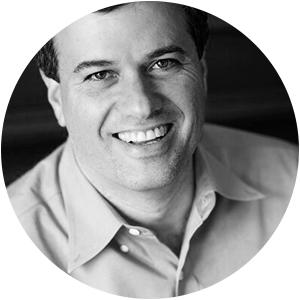Dear Sean,
I have to start by saying I feel silly asking for advice, because my firm is doing well. We’re getting big residential projects from great clients who give us creative freedom and don’t quibble over our fees. I know I’m lucky—but I’m also feeling unfulfilled. After nearly a decade of residential work, I want something more: a restaurant, a hotel, a retail store, anything. I’m ready for a new challenge, but when I pitch myself for those kinds of jobs, I keep getting passed over. It’s like everyone looks at my portfolio, sees the one thing my firm does so well, and can’t imagine that we’d be suitable for any other type of work.
How do I get unstuck and start attracting these projects? How do I translate all that we can do so that prospective clients outside of the residential realm will realize we’re ready, willing and oh-so-capable?
Pigeonholed
Dear Pigeonholed,
First, congratulations on running a successful firm where you are able to do the kind of work you most enjoy for your clients. However, I also completely understand the desire for a new creative challenge. While you might think it is your portfolio that is holding you back, I’d like to suggest an alternative—it isn’t the work, but it may well be the way you talk about your work. No matter how impressive your portfolio, you will struggle to land the commercial projects if you do not speak the language these types of projects will demand of you.
There is a vast difference between commercial and residential projects—including the role that you, as the designer, play in the project. For residential projects, as you well know, you are the star of the show. Your work will directly impact your clients’ lives, and though you may bring in other trades to execute your vision, it is ultimately up to you and your firm to tell their story in the most compelling way.
Commercial projects are different. No matter how beautiful your restaurant design is, if the food is terrible and the service worse, the chance of success is minimal. You are a member of the team. Switching gears to be a co-star is hard—really hard—but start by building that kind of collaborative thinking into your presentation, and into the way you talk about the work that you do.
Of course, being a team player is not nearly enough. The next step is addressing how your firm will solve a problem with your work that the typical commercial designer cannot. Simply: Why does the way you see the world as a designer matter more to the client than another world view? With all that you have done in your residential career and the well-deserved reputation you have built, you are the safe hiring choice in that realm. In the commercial world, though, you are not; you are the risky, unproven option. Your client will have to defend their decision to hire you—and if they do not have a story compelling enough to risk losing their job for doing so, why would they?
Which, of course, brings us back to the one thing that matters most: Every designer is defined by that which they cannot live without—whether a particular element, viewpoint or even client type—and this one thing must align with the mission of the commercial project. Own the notion that, when it comes to the one thing that matters most to you, you are the best in the world (your world). There are legions of designers who have crossed over to commercial from residential and back again, and the thing they have in common is owning the specificity of who they are and what they stand for. You can be no different. Otherwise, what exactly does the client have to hang their hat on and choose you over the safe choice? Use your one thing to drive home the idea that what you will do is more than worth the risk.
In today’s digital world, the very notion that you will step out to support the project is critical. Ask yourself why sharing your involvement in the project to the world will make the project better, more valuable to everyone. Find that story, share it as you go after these new projects, and see where that takes you. Good luck!
____________
 Sean Low is the go-to business coach for interior designers. His clients have included Nate Berkus, Sawyer Berson, Vicente Wolf, Barry Dixon, Kevin Isbell and McGrath II. Low earned his law degree from the University of Pennsylvania, and as founder-president of The Business of Being Creative, he has long consulted for design businesses. In his Business Advice column for BOH, he answers designers’ most pressing questions. Have a dilemma? Send us an email—and don’t worry, we'll keep your details anonymous.
Sean Low is the go-to business coach for interior designers. His clients have included Nate Berkus, Sawyer Berson, Vicente Wolf, Barry Dixon, Kevin Isbell and McGrath II. Low earned his law degree from the University of Pennsylvania, and as founder-president of The Business of Being Creative, he has long consulted for design businesses. In his Business Advice column for BOH, he answers designers’ most pressing questions. Have a dilemma? Send us an email—and don’t worry, we'll keep your details anonymous.
Homepage photo: Shutterstock.com





























